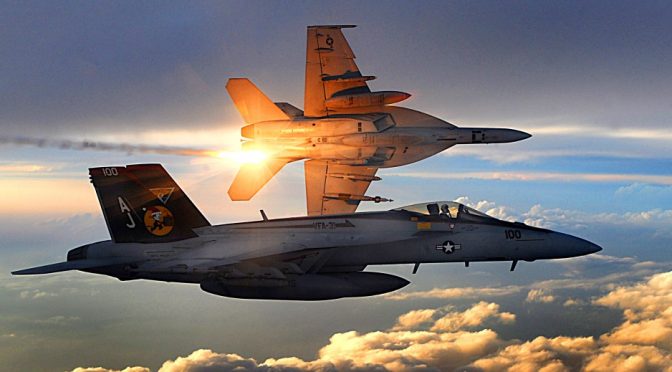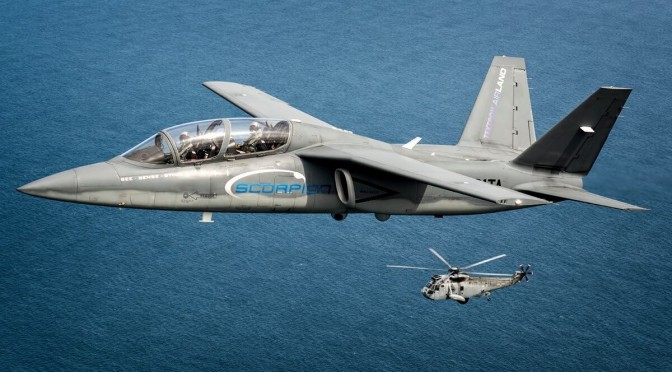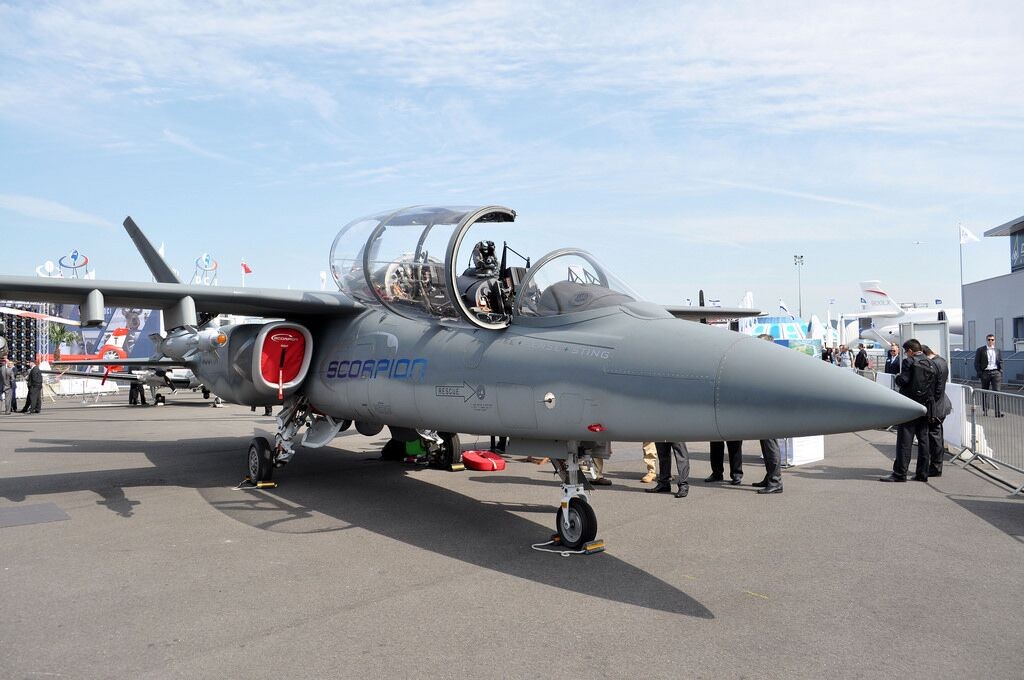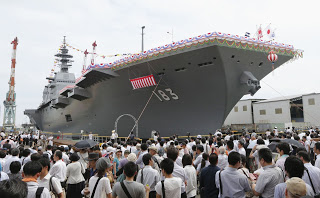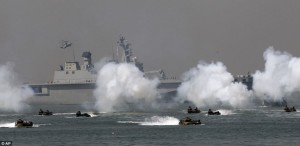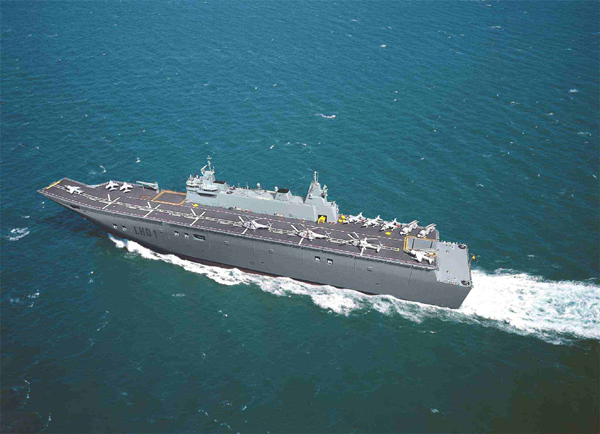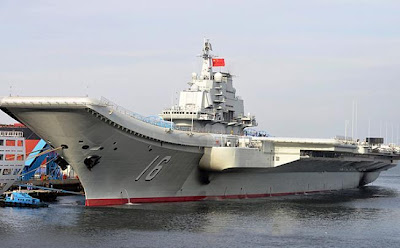The following article originally published at the Conference of Defence Associations Institute. It is republished with permission. It may be read in its original form here.
CDA Institute guest contributor Peter Layton, a Visiting Fellow at the Griffith Asia Institute in Queensland Australia, offers his thoughts on Canada’s potential plan to acquire Super Hornets as a bridging capability.
Every country has an F-35 story it seems. Both Australian and Canadian force structure planning has been blighted by the aircraft’s problems and long delays. In 2007 Australia opted for a bridging capability – against Air Force advice – and acquired the F-18F Super Hornet. Canada now appears to be similarly considering a bridging capability, perhaps also against Air Force advice, and possibly acquiring Super Hornets.
Sounds much the same, at first glance. But Australian and Canadian requirements have some fundamental differences, and just as importantly time has moved on. 2016 is not 2007.
For Australia, the F-18F acquisition has been a good experience; the aircraft arrived on time and under budget. Neither are surprising in that the aircraft was an off-the-shelf buy rather than an F-35 developmental program. The in-service F-18A Hornet aircrew found converting to the Super Hornet easy and quick, with the US Navy (USN) training system providing a good head start.
The maintenance and support, however, was a much more complex matter. The current variant Super Hornet technology is considerably more advanced than the 1980s vintage Hornet. In many respects the Super Hornet’s technology is closer to the F-35 than the F-18A; it is really more of an F-35 Lite than a ‘super’ Hornet.
In being more advanced, the Super Hornet’s operating costs are much greater than those of the older Hornet. Apples to oranges comparisons are hard given different fleet sizes and other factors, but are probably more than twice as much per aircraft (see p. 120 of a recent Australian Strategic Policy Institute report). In this, a major project lesson learned by the Australian acquisition organisation is that, while off-the-shelf jets can be quickly acquired, “the establishment of a sustainment solution is a challenge and requires early management oversight.” Half the Super Hornet fleet had been delivered within three years but reaching the final operational capability state, when everything is bedded down, took 5½ years from government approval.
It must also be remembered that the F-18 that Australia and Canada bought was developed from the US Air Force’s (USAF) Lightweight Fighter technology evaluation program. The F-18 began life as an air-to-air fighter first and a bomber second. The F-35 is the reverse with air-to-ground the primary requirement and air-to-air secondary. By dent of excellent sensors, datalinks, stealth, and millions of lines of code, the F-35 overcomes the airframe deficiencies that arise from this upbringing, albeit at the cost of great complexity and perhaps a certain operational brittleness.
In contrast, the F-35 and the Super Hornet are both alike in being originally designed as strike fighters. Unsurprisingly, both offer broadly similar capabilities and neither are highly maneuverable dogfighters. In wars-of-choice such as fighting ISIS in Iraq the differences between the aircraft in terms of operational effect might be marginal.
Given this, maybe a Canadian Super Hornet bridging capability makes some sense. It would take the pressure off having to make an F-35 decision – at a time when the aircraft design remains unstable, maintenance systems are immature, operating costs uncertain, and the US’s chief tester is still publishing scary flight test reports. On the other hand, the F-35 program office is progressively addressing technical issues, unit costs are coming down, more aircraft have been ordered by various countries, and the USAF looks set to declare an initial operational capability this year.
Yet this might not be the kind of capability most want or are expecting. As more becomes known about the software, it seems that the F-35 might not be fully operationally ready until Block 4 is implemented. This Block may also see some key hardware changes, such as bringing the Electro-Optical Targeting System (EOTS) up to a suitable standard. Block 4 should be ready early next decade. Buying F-35s before then might mean expensive upgrades before they even enter delivery flight-test. Unfortunately for the F-35, buying later is always cheaper and always brings a better standard aircraft.
In Canada, another consideration is whether there will be a capability gap between the new fighters’ introduction to service and the last old Hornet retiring, by 2025 or even earlier. It should be recognised that the transition period will see a dip in capability and some years when deploying a squadron overseas would severely tax the RCAF, especially on the personnel front. Individuals can’t be at home bringing a new fighter on board while fighting offshore. Moreover 2025 is not far away in major project terms. It took Australia almost six years to fully bed down a technically well-understood, off-the-shelf fighter. The F-35 is in nothing like the same state; even if contracting this year, meeting the 2025 deadline would be a near-run thing if Canada wanted a seamless transition from one aircraft type to the other.
But hold everything. The F-35 program, while too big to stop, may not be too big to fail, at least in the air-to-air arena. (Its air-to-ground capabilities appear robust by comparison.)
Enter stage left the shadow of the future. Air superiority is becoming contested again in both East Asia and Europe. As the RAND Corporation warns, “continuous improvements to Chinese air capabilities make it increasingly difficult for the United States to achieve air superiority within a politically and operationally effective time frame.” The Center for Strategic and International Studies, considering China’s full range of defence capabilities – including its rapidly advancing fighter fleet – observes: ” at the current rate of U.S. capability development, the balance of military power in the region is shifting against the United States.”
In this vein, the USAF in Europe commander recently noted: “The advantage that we had from the air, I can honestly say, is shrinking.… This is not just a Pacific problem. It’s as significant in Europe as it is anywhere else on the planet … I don’t think it’s controversial to say they’ve closed the gap in capability.”
Most worryingly, USAF’s head office has determined that the “projected force structure in 2030 is not capable of fighting and winning against …potential adversary capabilities.” The growing fleets of F-35s in service with America and its allies seems inadequate to ensure air superiority beyond 2030. Future control of the air is in doubt.
What to do is uncertain. Whatever Canada buys now appears unlikely to be operationally viable in the air-to-air role beyond 2030 or so. The USAF is suggesting an expedited program to get some suitable ‘system of systems’ into service before then – maybe even 2025 – so air superiority can be maintained long term. What these systems might be remains unknown.
One option is for Canada to ignore this reality, press on and buy F-35s to replace the Hornets by 2025. This is not necessarily a bad approach. The F-35’s air-to-air capabilities might be doubtful long-term against advanced fighters but should be adequate for contributing to NORAD where the threats will hopefully be meager. The F-35’s air-to-ground capabilities should be suitable for participating in NATO and future coalitions of the willing. In this case, the American alliance will be primarily relied upon to ensure control of the air.
Some will say – probably correctly – that this sounds like spending vast sums of money to buy a second rate air combat force and that ‘hope is not a strategy.’ Yet Canada’s (and Australia’s and most European NATO nations) Cold War fighter contribution was arguably in this vein. But you have to ask if you’re buying a doubtful capability anyway, is there any reason not to go for the lower cost Super Hornet option then.
Another alternative is to buy say 30 Super Hornets now, retain 30 CF-18 Hornets, and wait until mid-next decade to decide what to do. By then America’s intentions concerning new air superiority systems will be clearer and perhaps – a big ‘perhaps’ – Canada could buy into a long-term robust solution. This offers at least a chance Canada may remain an ally important for more than just geographical proximity. If however this air superiority path does not eventuate, is unaffordable, or not releasable to close allies, by the mid-2020s better and cheaper F-35 versions will be available to round out Canada’s fighter force in terms of numbers. Importantly, also by then, the F-35s operating costs will finally be known, allowing a more accurate assessment of whether a mixed fleet really is more expensive than a single type one. It may not be.
The later approach stresses hedging and is suitable for uncertain times but takes a dark view of the future where strategic circumstances are deteriorating. The other option is more of a big bet built on the hope the geopolitical situation in next few decades is better than seems to be likely now. The choice between these two options is not easy but indicates the F-35/Super Hornet issue is more complex than it seems at first. Which is more sensible? More pragmatic? Some deep thinking is required.
Dr. Peter Layton is a Visiting Fellow at the Griffith Asia Institute, Griffith University in Queensland, Australia. (Image courtesy of Staff Sgt. Aaron Allmon, U.S. Air Force.)

